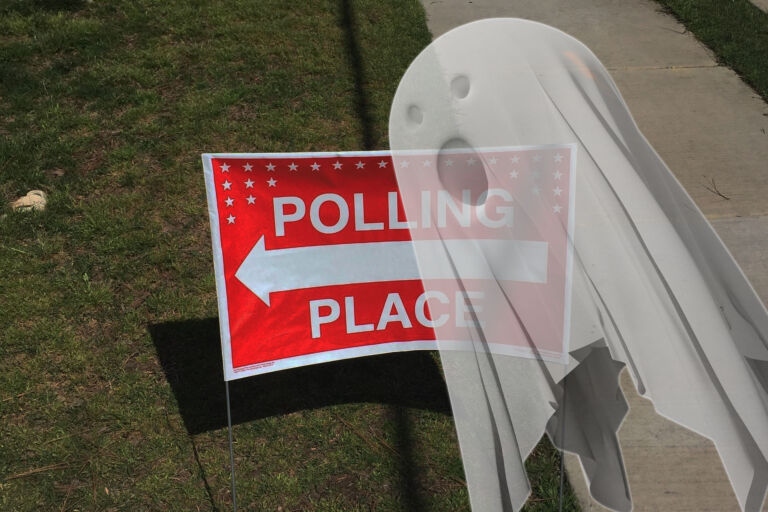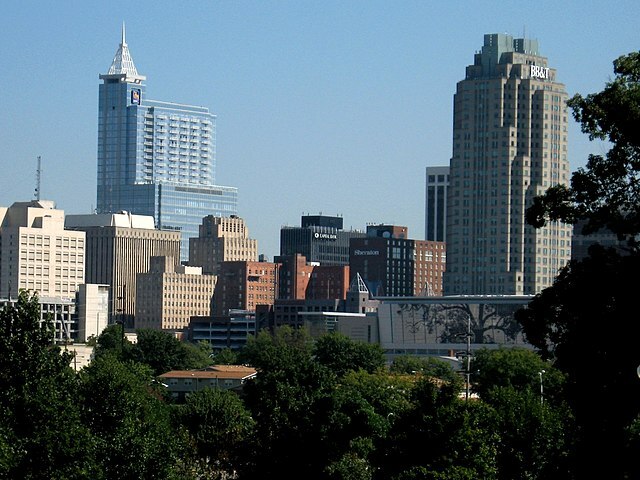Back in the spring, I wrote about a “bicycle superhighway” idea that was just starting to be kicked around. The concept was a five-mile path along I-40 between Raleigh and Durham. We’re not talking about a standard bike lane like you would see in a city, though. Those city bike lanes are normally 4-5 feet wide and often only delineated by a paint line. There are safety concerns about such lanes even on city streets, so clearly I-40, with traffic scooting along at 80mph, would require something very different.
The proposal is for a something more like 15 feet wide with a physical barrier to separate it from the road. Much of that areas is currently wooded, so it is possible that the bikeway would be set off some way from the interstate, with trees and greenspace in between. It would connect existing segments of greenway or roads with bike lanes so that it would provide a link in Raleigh’s larger bicycle infrastructure.
It’s anticipated that traffic on this bikeway would move at 16-19mph, which is pretty quick. Cycling the whole five miles would take less than 20 minutes at those speeds. And both those speeds and acceptable safety standards would be achieved by building tunnels under the interchanges onto I-40, making it possible for cyclists to ride the entire stretch without encountering a car.
Sig Hutchinson, Wake County Commissioner and probably the project’s most enthusiastic supporter was quoted in a WNCN article as saying that this “will be the most significant bike infrastructure in this history of the entire Triangle.” And why does he think it’s so significant?
There are lots of reasons that he cites, many of which have strong hints of moral superiority and paternalism. Cycling is both better for the environment and healthier than driving, for example. But, importantly, Hutchinson was also quoted in the same WNCN article saying, “the best thing I can say is when everyone is stuck still on I-40 in the morning and the afternoon, and you could be going 17 miles an hour by all those stopped cars.” Similarly, Chris Snow, Director of Wake County Parks and Recreation, said, “I think when things come together right there’s going to be a lot of people using this as a route to work.”
I question this. Even within North Carolina cities, we know that people don’t cycle to work. According to the Census Bureau, only 0.6 percent of commuters in Raleigh use a bicycle to get to work, and the numbers fall as distances between home and work increase. We also know that people do a lot of other things on their way to and from work. They drop off and pick up kids. They buy groceries or collect the dry cleaning. They do a bit of shopping. They meet friends for dinner.
And all of those things are far more difficult to do if you’re on a bike. So would someone use this bikeway to get to work? Almost certainly yes. Will very many? No. Will there be anywhere close to enough people moving from cars to bikes for this bikeway to reduce congestion on I-40? Absolutely not.
Added to that is the question of cost. The media is reporting an anticipated cost of around $1 million per mile for this bikeway. WRAL mentioned that Chris Snow used that figure. But as far as I can tell, that figure is based on the average cost per mile of a greenway. This project isn’t just a greenway. First of all, it’s wider. The I-40 bikeway would be around 15 feet wide, while greenways are usually about 10. That means that more land would need to be acquired and more materials and labor would be required to pave it. The cost will be greater than a greenway.
Even more importantly, this proposed bikeway includes tunnels under the interchanges along that stretch of I-40. I’ve looked up what it costs, on average, to build a bike tunnel under an interstate interchange, but estimates vary significantly. But one thing is consistent. It’s very expensive. Everything I’ve seen about this project totally glosses over the increased costs associated with those tunnels.
The Triangle is growing fast, and that means that roads like I-40 are indeed becoming more congested. That’s a real issue and one that state and local governments need to address. But spending millions on a five-mile stretch of bikeway that won’t reduce that congestion is a bad deal for taxpayers. The vast majority of taxpayers will never use this bikeway. They’ll never see any benefit from it at all. But if this plan goes ahead, these taxpayers will be left with fewer dollars to spend on projects that might actually improve traffic congestion.


